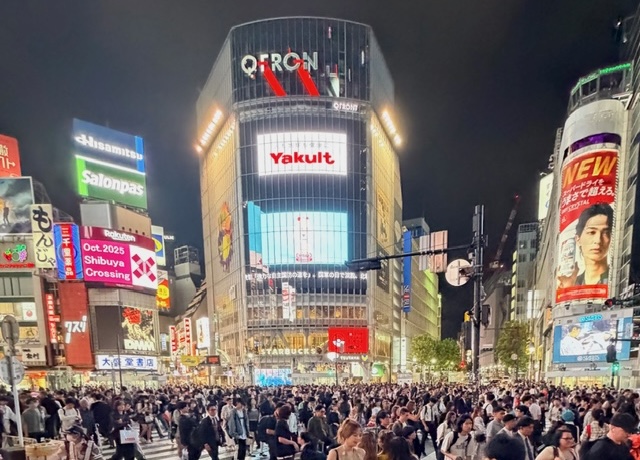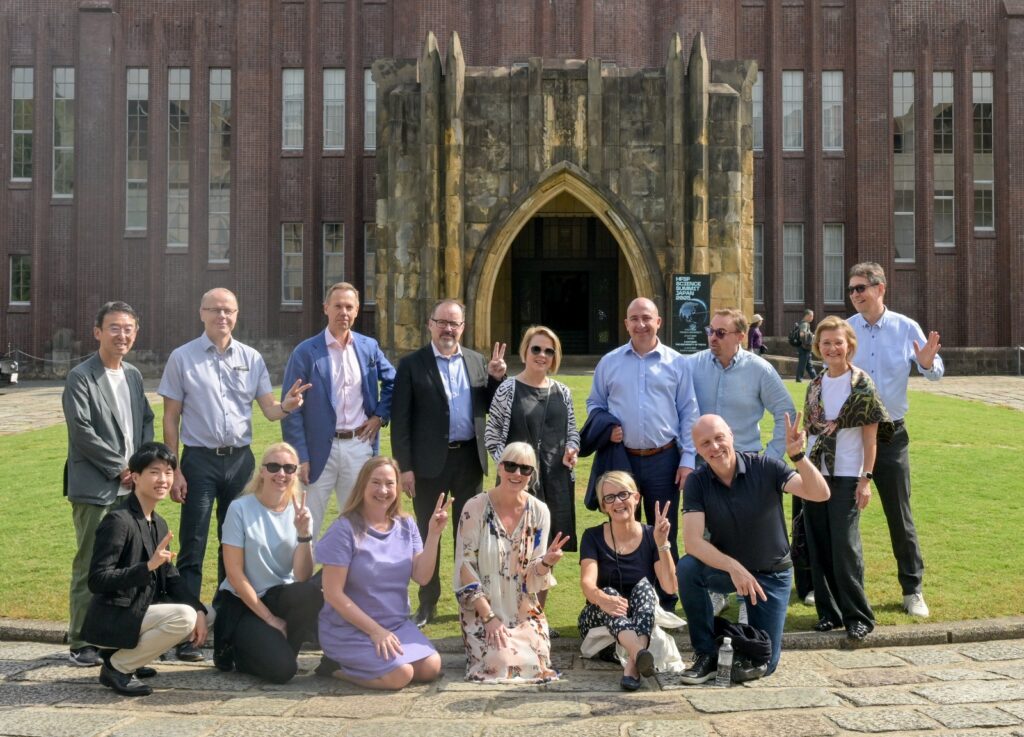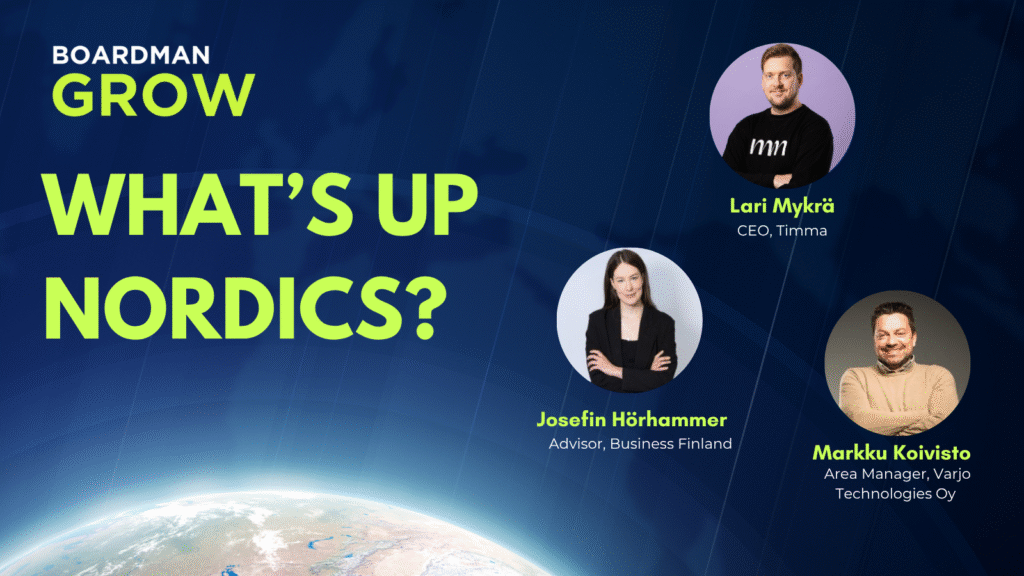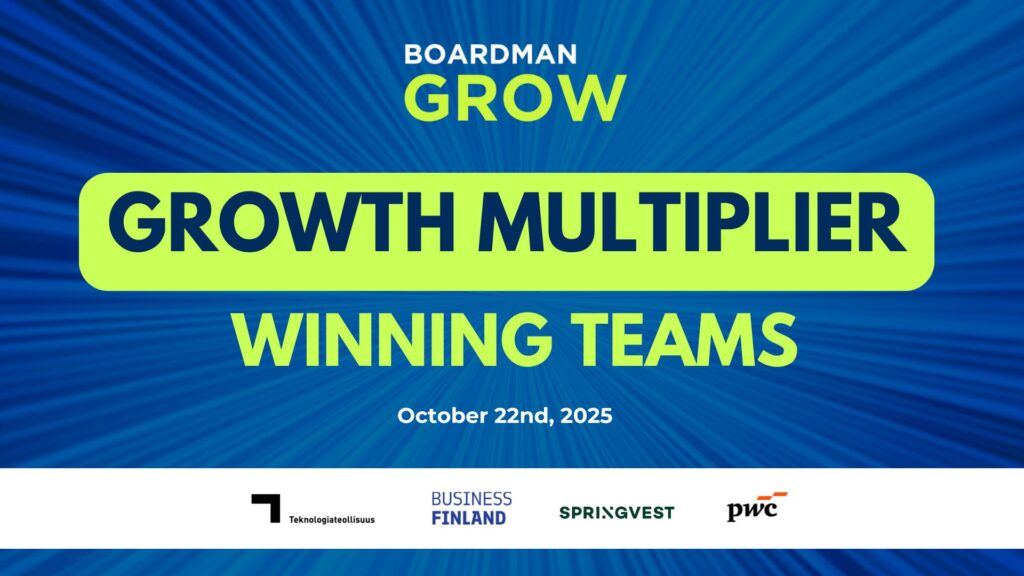What Japan Taught Me About Purpose, Patience, and Progress
Over the course of our Boardman Grow visit to Japan, we met with companies from Finland, Japan, and other global origins, from Fiskars and Reaktor to TBWA Hakuhodo, Fujitsu, Oji Holdings, J.P. Morgan, and Ant Capital Partners, as well as research and innovation hubs such as the University of Tokyo and Takeoff Tokyo. Each conversation offered a different lens on leadership, innovation, and culture, showing how Japan’s patience, precision, and purpose shape not only business but society at large.

Stillness and Motion
Japan challenges many of the assumptions we hold about leadership, innovation, and growth. During our visit, I was constantly reminded that progress doesn’t need to be loud or fast to be meaningful.
Time in Japan feels both still and in motion: a centuries-old shrine beside a glass skyscraper, or the quiet precision of people moving in rhythm through one of the world’s busiest cities.

Leadership isn’t about speed alone; it’s about finding balance between decisiveness and purpose. Moving fast without direction is unsustainable. Japan reminded me that in a world changing faster than ever, we should build for longevity.
Harmony, Innovation, and the Art of Progress
Japanese leadership and innovation share a common mindset: harmony first, progress second. Consensus and alignment are essential before moving forward—a strength that ensures stability but can slow decision-making. Yet the same consensus culture, while fostering harmony, can make it difficult to challenge the status quo or act quickly when new opportunities arise.
At the University of Tokyo, students spoke about this tension. Many want to launch startups or take risks, yet societal and family expectations still favor joining established companies. Choosing stability remains the “respectable” path. The University has launched a dedicated entrepreneurial program, and interest is growing, but support structures for startups still vary widely in maturity and impact. Still, many young founders find it easier to seek funding and freedom to experiment abroad—a sign that Japan’s entrepreneurial ecosystem, though evolving, has yet to reach its full potential.

Japan often adopts global technologies and refines them for local needs, improving reliability and quality. The concept of Kaizen, or continuous improvement, captures this perfectly. It’s not just a management tool but a shared responsibility across society: everyone, from leaders to frontline workers, is expected to make small, daily improvements toward a collective goal. Progress is not about personal gain but about improving the system for everyone.
At Fujitsu, this translates into long-term innovation that serves societal needs. At Takeoff Tokyo, founders blend Japanese craft with global ambition, taking small steps toward shifting the risk-averse mindset.
The Power of Detail and the Language of Subtlety
Japan is a high-context culture, where meaning is implied rather than stated directly. Walking through Tokyo, subtlety coexists with visual overload: flashing neon, giant screens, and endless crowds. Yet the city moves in perfect rhythm. There’s no honking, no shouting, just quiet efficiency amid millions.
Public etiquette is communicated nonverbally. A kawaii mascot reminds you to stay quiet in the elevator. During one lunch, we were handed a small leaflet explaining each dish and its preparation. A reminder that even service is storytelling.
The same precision defines Japan’s retail culture. With 85 occasions and 43 seasons for gifting, and nearly 45% of the population aged 65 or older, brands must tailor products to a highly segmented and emotionally nuanced market.

At the Ad Museum Tokyo, we learned how Edo-period merchants used calligraphy and woodblock prints to build trust through design and craft, not persuasion—a philosophy that still holds true. At TBWA Japan, we heard how trust and credibility outweigh competition; aggressive campaigns rarely resonate.
The creative community remains cautious about AI, especially in fields like manga and design, where craftsmanship is sacred. Yet when AI enhances rather than replaces creativity, attitudes are shifting. Examples like McDonald’s “McHappy Day Generator”, which used AI to personalize joyful messages, show how innovation can coexist with artistry.
Still, only about half of Tokyo’s residents have used AI tools—far fewer than in cities like Shanghai (94%), London (72%), or Los Angeles (71%). In a country where the workforce is aging and skilled labor is increasingly scarce, one might expect AI adoption to be higher—another example of Japan’s thoughtful, deliberate pace of change.
Underlying this attention to detail is the Japanese concept of wabi-sabi, finding beauty in imperfection. It’s a powerful reminder for marketers and creators alike: perfection lies not in flawlessness, but in authenticity, craft, and the emotional resonance of small details.
Longevity, Trust, and Purpose in Business
Over half of the world’s 200-year-old companies are Japanese, which is a testament to deeply ingrained long-term thinking. Businesses here exist to serve society, not just shareholders. Stability, reliability, and purpose come before disruption. Fujitsu, now 90 years old, has already set its next milestones: 100 and 200 years. In a world moving faster than ever, this commitment to longevity feels almost radical. Yet the same focus on continuity can at times hinder reinvention; many long-standing companies are only now beginning to explore new models and partnerships to stay relevant in a fast-changing world.
Concepts like nemawashi, or quiet, behind-the-scenes consensus building, ensure that decisions are deeply supported even if they take time. It reflects a broader truth: Japan prioritizes the group over the individual, the team over the ego. Patience isn’t just a virtue; it’s a collective asset.
This mindset shapes work culture too. Honne (true feelings) versus Tatemae (public façade) means people rarely show their authentic selves at work; honesty is reserved for close friends. In Finland, it’s the opposite: authenticity is seen as a strength, even measured in company culture surveys as “I can be myself at work.” Both approaches have value; one protects harmony, the other fosters openness. The challenge is balance. In Japan’s case, this pursuit of harmony can sometimes limit open debate or creative risk-taking, qualities that may prove essential as younger generations push for cultural change.
At Fujitsu and Ant Capital Partners, this long-term mindset was clear: leadership built on trust, service, and continuity rather than short-term gains. Leadership here is stewardship, not showmanship.
Learnings for the future
Japan’s model of patience and purpose offers valuable lessons for leadership, but it also faces real challenges: a stagnating economy, an aging population, and a shrinking workforce. There are signs of change—from startup-minded students to younger leaders rethinking risk. While cultural consensus takes time, there is certainly room for new opportunities.
In the end, Japan left me reflecting on the balance modern leadership requires: speed with purpose, innovation with stability, and individuality with collective progress. It reminded me that longevity isn’t about resisting change; it’s about evolving with intention and building something that endures.

Anna Porvari is a CEO of a Finnish tech driven ad agency Kuubi. She has 20+ years of experience from marketing, advertising and brand building from the US and Europe, focusing on digital communication channels. She’s especially interested in all the latest developments in innovations, technology, AI, metaverse, and leadership.





